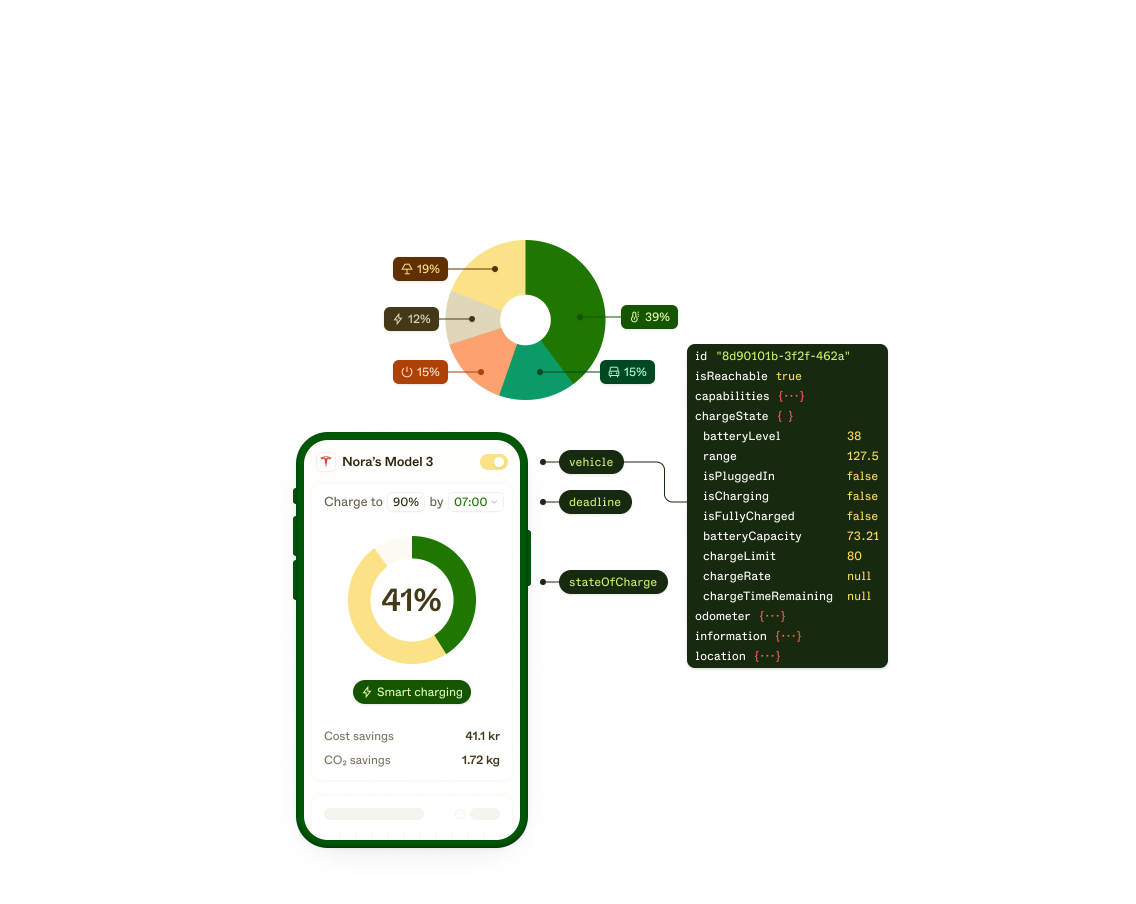- Build an energy superapp
Engage existing users and attract new ones by combining all their energy device data into a single app.
- Help users save money
Reduce users' energy bills by helping them maximize their renewable energy production and consumption.
How it works
Enable home energy management in your app
Users connect energy devices
Users sign into their OEM accounts using Enode’s link UI, and easily connect their devices to your app.
Users access energy device data
Users instantly see detailed data for each device, and control them remotely from within your app.
Users set energy price or comfort parameters
Users activate energy management automations for a single device, or across multiple devices in the home.

Customer story
Fjordkraft cuts customer EV charging costs by 20%
"The partnership between Enode and Fjordkraft has been a win-win from the start. They have enabled us to become a market leader...The Enode team is years ahead of the competition when it comes to…smart energy management."
Business Developer

Energy devices
Connect to a range of energy devices with Enode's API
EVs & Home chargers
Connected EVs and home chargers can reduce EV charging rate or stop charging altogether when electricity prices are high.
Solar inverters
Connected solar inverters can be optimized for self-consumption, eg. charging EVs automatically when there is excess solar production.
HVACs
Connected HVACs can be controlled with custom schedules and optimized for price signals.
Home batteries
Connected home batteries can store excess energy during times of surplus, and discharge it to users homes to prevent drawing from the grid when electricity prices are high.
The home energy management tech stack
New to home energy management? Below are the components you’ll need to launch it within your app:
Read docsHVAC
EV and EVSE
Vehicle information
Reads user’s EV make, model, model year and odometer.
State of Charge (SoC)
Reads the current battery level, charge rate, plug-in status and charge time remaining to calculate optimal charging window.
Charging statistics
Reads historic charging data.
Start and stop commands
Sends a command to user’s EV or EVSE to start or stop charging.
Home battery
Battery information
Reads the battery make, model, model year and capacity.
State of Charge (SoC)
Reads the current battery level, charge rate and charge time remaining to calculate optimal charging window.
Charge or discharge commands
Sends a command to remotely charge or discharge the home battery.
Solar inverter
Energy market price data - supplied by Enode
Nordpool or EPEX spot hourly pricing
Available in the Nordics, Baltics, Central & Western Europe and the UK. US customers can provide Enode with energy market pricing through our tariff API.
Frontend application
Frontend application
Your mobile or web application.
Ready to get started
Start exploring our APIs for free with our Starter plan, or contact us to request a custom plan for your company.

